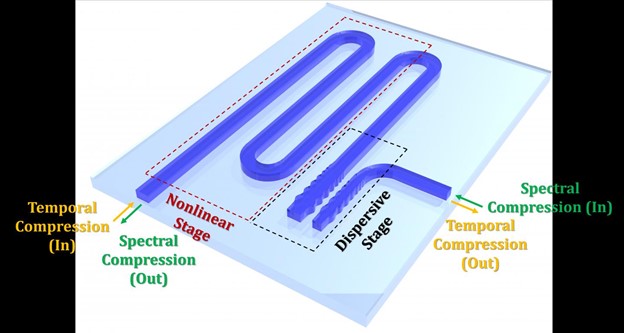
According to photonics researchers, the amount of time taken up by an optical signal limits the amount of data that can be carried. Temporally shorter signals allow more data to be squeezed into a given time duration, in a method called optical time division multiplexing. The researchers recently succeeded in squeezing light in time by 11s. The system also allows the frequency (or wavelength) content of light to be squeezed as well. The developed temporal compression system allows an equivalent increase in the number of bits transmitted by light in a fiber optic network. This has important implications for advanced metrology, imaging and high-speed optical communications.
Details of this work appeared in Light: Science and Applications, representing a collaboration between researchers at the Singapore University of Technology and Design (SUTD), A*STAR Institute of Microelectronics and the Massachusetts Institute of Technology. The ultra-small size of the compressor system provides several orders of magnitude smaller footprint compared to bulky, benchtop compressor systems used for generating short pulses in ultrafast optical signal processing.
Providing strong compression on such a small device footprint may facilitate low-cost deployment of short pulses needed in telecommunications, data center, precision manufacturing and hyperspectral imaging.
Original Release: Eureka Alert
